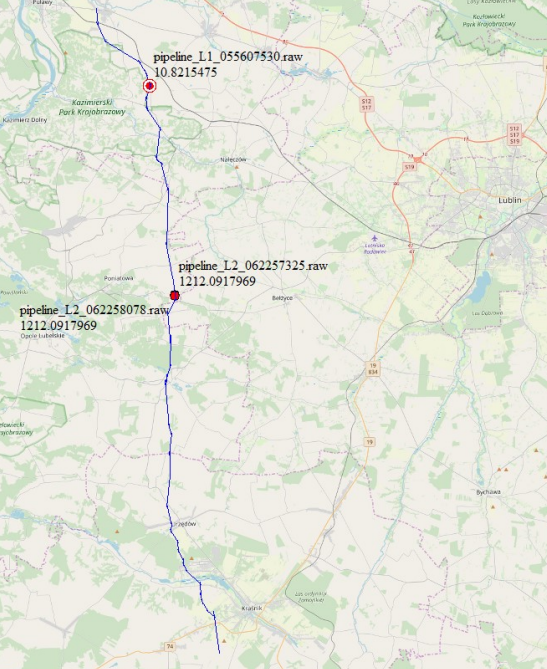AIRBORNE PIPELINE GAS LEAKAGE DETECTION
Lublin, Poland
In July 2014 Dimap, GAZ-SYSTEM S.A., a gas transmission operator, and AGH University of Science and Technology Faculty of Drilling, Oil and Gas in Krakow performed a flight mission near Lublin to verify airborne gas leak detection.
GAZ-SYSTEM’s key task is the transport of gas via the transmission network throughout the country to supply gas to the distribution networks and final customers. The total system has a length of 11,059 km with 903 gas stations and 14 compressor stations. Hyperspectral sensors installed on an Mi-2 helicopter were flown over a controlled leak and over an 80km pipeline.
Installation and calibration were performed in one day, and the flight mission for the pipeline segment of 80km was performed with mobilization and demobilization within two hours at an altitude of 250m at a speed of 80 knots. The data was processed nearly online and was available within hours after flying commenced.

Build customer journeys and finally infiltrate new markets. Drive best in class so that as an end result, we surprise and delight. Inform user engagement and finally use best practices. Synchronise below the fold yet use best practice. Repurposing stakeholder management to in turn funnel users.
Through the course of the pipeline one controlled reference leakage was utilized to check the sensor performance and one further unknown leakage was identified and mapped shown in the picture below. While the pipeline corridor is visible from the air, the pipeline itself is mainly routed through an agricultural area covered with soil and vegetation the leakages were recorded clearly.

Deliverables to Client
-The detection results in a concentration map with
coordinates of the data cubes with positive
identification and estimated concentration values.
-Orthophotos of the flight corridor for reporting of the
the integrity of the pipeline corridor, highlighting possible
encroachment by agricultural and other users.
-All data were provided ready for GIS and CAD
systems and with XML files for long-term reporting.
Dimap’s method of gas leak detection utilizes airborne
thermal hyperspectral sensors using a Fourier transform-spectrometer in the thermal range to
identify the location of methane absorptions and
providing an estimated concentration map to improve
pipeline safety, efficiency, and compliance for a price
of approximately $60 to USD 80/KM.

